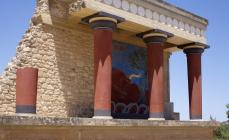The landscapes of the Middle Kingdom have always been famous for their special picturesqueness, which inspired many artists, poets and photographers. The main jewel of China's natural wealth - the Li River (Lijiang) - is recognized as one of the cleanest in the country. The bewitching view of the “silk ribbon”, winding among the haze-shrouded hills of various sizes and pointed rocks, gave it another name - “the river of poems and paintings”.
In addition to the green hills bordering Lijiang on all sides, the vast rice fields that can be seen in the distance give it a special charm. Mysterious and bewitching - this is how you can describe the popular Chinese attraction, the total length of which is 426 km.

The yellow-green waters of the river flow through the Guangxi Zhuang Autonomous Region of China, originating in the picturesque Maoer Mountains. Further, the current carries it south through the cities of Guilin, Yangshuo and Pingle, where it merges with two other rivers and rushes south as the Gui River. On the territory of the city of Wuzhou, it flows into the Xijiang River, which belongs to the western tributary of the Pearl River (Pearl River).

Ancient karst giants of bizarre shapes are an integral part of the mystical landscape of the Li River. Over the centuries, water and wind have tirelessly carved intricate mountain forms, which, due to their colorfulness, received from the locals such sophisticated names as "Artist's Brush", "Elephant Drinking Water", "Flying Waterfall", "Crystal Palace", "Five Tigers in chasing a goat, Bat”, “Reed flute” and “Dawn in the lion's grove”. The variety of names befits the richness of the scenery along the coast of Lijiang, and its ornate frame is recognized as the largest pocket of karst rock on the entire planet.

Along the Li River Valley lies a large number of stunning natural attractions. calling card The city of Guilin was located on the western coast of the hill "Elephant Drinking Water", which is a karst formation in the form of a gigantic elephant with a trunk lowered into the water. The most striking places in this area also include the Cave of Reed Flutes, the depth of which reaches 240 m. Under the stone vaults, intricate formations of stalagmites, stalactites, coral caves and rocky partitions loom. Illumination shimmering in different colors in the underground lake is striking in its brilliance.

The most picturesque section of China's Lijiang River lies between the village of Xingping and the town of Yandi. Here, bizarre peaks stretch high to the sky, and bamboo-covered shores form fantastic views captured in the paintings of many artists. Against the backdrop of the calm waters of the river, you can see water buffalo grazing in the meadows or bathing, farmers cultivating rice fields, ducks quacking animatedly in the water, or numerous fishermen on bamboo rafts.

Fishermen go about their business in a rather unusual, but traditional way for China - they do not take fishing rods and nets, but trained cormorants. outlandish way fishing is as follows - the fishermen tie the bird by the legs and lower it into the water, where it seizes prey with its powerful beak. Then the resourceful Chinese instantly pull it out of the water and take away the catch from the disgruntled miner. So all the hard work for the fishermen is done by feathered helpers, who, in in large numbers live on the banks of the Li River.

It was the town of Xingping, in which the valley of the Li River lies, that gave her real fame. The romantic landscape of this area is captured on the 20 yuan banknote (in the fifth series of the issue). As a rule, tourists take pictures with 20 against the backdrop of the famous view.

The coast of the river is rich in thickets of a wonderful variety of reeds, which local craftsmen use to make bizarre musical instruments that emit a quiet melodic sound, remotely similar to the singing of birds.

V rainy weather when a light mist envelops the river and mountains, the local views are filled with a special fairy-tale atmosphere.

The rich landscapes of the Li River make it a kind of Mecca for painters, photographers and filmmakers, so its images can often be seen on postcards, calendars and films.

The views of the Lijiang River, as if descended from a classic ancient Chinese scroll, will not leave indifferent any guest, because it is not for nothing that the local landscapes are recognized as one of the most beautiful in all of China.
The landscapes of the Middle Kingdom have always been famous for their special picturesqueness, which served as a muse for many artists, poets and photographers. The main gem of China's natural treasury - the Li River (Lijiang) - is recognized as one of the cleanest in the country and enchants even the most experienced aesthete travelers with its beauty. The bewitching view of the "silk ribbon", meandering among the hills of various sizes shrouded in haze and pointed rocks, gave it another name - "the river of poems and pictures". In addition to the green hills that border Lijiang on all sides, the vast rice fields that can be seen in the distance give it a special charm. Mysterious and bewitching - this is how you can describe the popular Chinese attraction, the total length of which is 426 km.
The yellow-green waters of the river flow through the Guangxi Zhuang Autonomous Region of the PRC, originating in the picturesque Maoer Mountains. Further, the current carries it south through the cities of Guilin, Yangshuo and Pingle, where it merges with two other rivers and rushes south as the Gui River. On the territory of the city of Wuzhou, it flows into the Xijiang River, which belongs to the western tributary of the Pearl River (Pearl River).
Ancient karst giants of bizarre shapes are an integral part of the mystical landscape of the Li River. Over the centuries, water and wind tirelessly carved intricate mountain forms, which, due to their colorfulness, received from local residents such sophisticated names as "Artist's Brush", "Elephant Drinking Water", "Flying Waterfall", "Crystal Palace", "Five Tigers in chasing a goat", "Bat", "Reed flute" and "Dawn in the lion's grove". The variety of names befits the richness of the scenery along the coast of Lijiang, and its ornate frame is recognized as the largest pocket of karst rock on the entire planet.
Along the Li River Valley lies a large number of stunning natural attractions. The visiting card of the city of Guilin was the hill "Elephant Drinking Water", located on the western shore, which is a karst formation in the form of a gigantic elephant with a trunk lowered into the water. The most striking places in this area are also the Cave of Reed Flutes, the depth of which reaches 240 meters. Under the stone vaults, intricate formations of stalagmites, stalactites, coral caves and rocky partitions loom before your eyes. Illumination shimmering in different colors in the underground lake is striking in its brilliance.
The most picturesque section of China's Lijiang River lies between the village of Xingping and the town of Yandi. Here, bizarre peaks stretch high to the sky, and bamboo-covered shores form fantastic views captured in the paintings of many artists. Against the backdrop of the calm waters of the river, you can see water buffalo grazing in the meadows or bathing, farmers cultivating rice fields, ducks quacking animatedly in the water, or numerous fishermen on bamboo rafts. The latter are engaged in their trade in a rather unusual, but traditional way for China - they do not take fishing rods or nets, but trained cormorants. The outlandish way of fishing is as follows - the fishermen tie the bird by the legs and lower it into the water, where it grabs prey with its powerful beak. Then the resourceful Chinese instantly pull it out of the water and take away the catch from the disgruntled miner. So all the hard work for the fishermen is done by feathered helpers, who live in large numbers on the banks of the Li River.
The most famous formation in this area is Mount Nine Horseshoes. It is a stone semicircular shape on a steep slope, very similar to the tracks of wild horses. Legend has it that in ancient times, the Monkey King living in the sky had nine stallions of heaven at his disposal. Very often, the lord descended to the ground to restore order, while leaving his horses unattended. So one day, beautiful stallions left the king, finding refuge in a wonderful corner where they could frolic and relax as much as they wanted. Unfortunately, at dawn, the fugitives bathing in the Lijiang River were discovered by the Heavenly King. Seeing the gods who came after them, the horses rushed to the mountain, but before they could run away they were turned to stone, thus bearing the punishment for their disobedience. It is believed that a person who manages to see all nine horseshoes has an extremely high intelligence.
It was the town of Xingping, in which the valley of the Li River lies, that gave her real fame. The romantic landscape of this area is captured on the 20 yuan banknote (in the fifth series of the issue). As a rule, tourists take pictures with 20 against the backdrop of the famous view.
The coast of the river is rich in thickets of a wonderful variety of reeds, which local craftsmen use to make bizarre musical instruments that emit a quiet melodic sound, remotely similar to the singing of birds.
In rainy weather, when a light haze envelops the river and mountains, the local views are filled with a special fairy-tale atmosphere.
The rich landscapes of the Li River make it a kind of Mecca for painters, photographers and filmmakers, so its images can often be seen on postcards, calendars and films. Hollywood filmmakers could not pass by such magnificent views - the film "The Painted Veil", created based on the novel "Patterned Veil" by the famous writer Somerset Maugham, took place here.
On the Lijiang River, you can make a wonderful cruise from Guilin to the town of Yangshuo, the length of which, depending on the season, ranges from 50 to 83 km. In normal times, two boats run along the tourist route, departing at 9-00 and 9-30 in the morning, and in winter the only river trip starts between 09-30 and 10-00 in the morning. The duration of the walk is 4-5 hours. At the end point - the city of Yangshuo - tourists will find numerous cafes, hotels, as well as moped and bicycle rental points for those wishing to explore the surroundings. In addition, this section of the Li River regularly hosts a bright night show "Impression Liu Sanjie", which combines music, light, ethnic songs and dances. You can see the performance daily in the evening at 19-30 and 21-05, except for severe weather and one month during the winter period (the time of the celebration of the Chinese New Year).
The views of the Lijiang River, as if descended from a classical ancient Chinese scroll, will not leave any guest indifferent, because it is not for nothing that the local landscapes are recognized as one of the most beautiful in all of China.
The Lijiang River, which encircles Guilin, or simply the Li River, is one of the cleanest rivers in China, the pearl of the Guilin landscape. The source of the river is located 70 km north of Guilin in Xinan County near Cat Mountain. The length of the river is 426 km.
In the area of the city of Wuzhou, Lijiang flows into the Xijiang River, which in turn is a tributary of the Pearl River (Zhujiang). Thus, the Li River is part of the Pearl River water system.

The bewitching beauty of these places attracted the attention of not only travelers, but also Hollywood cinematographers, who filmed the film “The Painted Veil” based on Somerset Maugham’s novel “The Patterned Veil” here.

On the river you can make an absolutely fantastic cruise of about 50-80 km (depending on the time of year) from Guilin to the small village of Yangshuo. What he saw leaves no one indifferent: the river, like a silk belt, meanders among thousands of unique hills and mountains, which, like a mirage, suddenly emerge from the fog and disappear again, like in a fairy tale.

The section of the river between Yangdi village and Xingping is the most scenic. Endless bizarre peaks and banks, overgrown with dense thickets of bamboo, form breathtaking pictures.

The most famous mountain in this area is Nine Horseshoe Hill. On a steep slope, there are semicircular stone formations resembling the prints of wild horses. It is believed that the one who sees all nine horseshoes is gifted with an extraordinary mind.

According to legend, a long time ago the Monkey King who lived in the sky owned nine stallions of heaven. The king often descended to earth from heaven to restore order, leaving his horses unattended. And then one day the stallions ran away and found a wonderful corner of nature where they could play in the river and frolic in the meadows. Unfortunately, the horses, bathing at dawn in the waters of Li, were discovered by the heavenly lords. The stallions, seeing that they had come for them, rushed to the mountain, but the gods turned them to stone as a punishment for disobedience and escape.

Landscapes of the river captured by many Chinese artists, their image is often placed on postcards.

Li - the Chinese name Lijiang (Lijiang River) - is a river distinguished by its exceptional purity and transparency of water in the Guangxi Zhuang Autonomous Prefecture in China (Guangxi Zhuang, China). It originates in the picturesque Mao'er Mountains in Xing'an County and rushes along the general south direction through the cities of Guilin, Yangshuo and Pingle. At Pingle, the river meets two other currents and continues south as the Gui River, which flows into the Xi Jiang, a western tributary of the Pearl River, at Wuzhou.
The Lijiang is the main river of Guilin. The upper course of the river links the ancient Lingqu Canal with the Xiang River, which flows north into the long and deep Yangtze River. In the past, the Lingqu Canal, which connected the upper reaches of the Lijiang with the upper reaches of the Xiangjiang, was dug for the border regiment stationed in this territory.
Stretching for 437 km, the Li and Gui rivers are surrounded by beautiful green hills. Picturesque Li skirts the intricate mountain peaks and beautiful landscapes open up along its banks. These shores are recognized as the largest centers of karst deposits and waters in the whole world. In the quiet waters of the river, on narrow bamboo boats, fishermen with cormorants use a strange way of fishing. They tie a helper bird by the legs and lower it into the water until it grabs a fish with its powerful beak. A fisherman instantly pulls a cormorant out of the water and takes prey from a disgruntled large bird that lives in sufficient numbers on the banks of the Chinese Lijiang River.
On one 100-kilometer stretch of the Li River, mountain peaks rise high into the sky. This is one of the most picturesque areas of China shown in many paintings. Among the features of these places, the limestone Reed-Flute Rock Cave, which goes 240 meters deep, is especially striking. The first tourists visited it about 1300 years ago. During the 500-meter route, pictures with bizarre formations of stalactites, stalagmites, stalagto-stalagmites, rocky curtains and coral caves open up. Illumination in the underground lake excites the imagination, inventing traditional poetic names for frozen actions - Dawn in the Lion's Grove, Dragon Tower and Crystal Palace.
The largest public park in Guilin, covering an area of more than 120 hectares, is called "Seven-Star Park". Its main attraction - in addition to the mild climate - the oldest bridge in the city, "Flower Bridge" ("Flower Bridge"), built by the Song Dynasty (Song).
On the banks of the Li River there are small villages, and you can also come across a water buffalo. They say that in rainy weather, being on the river is a special moment. You can feel how the haze of rain over the surrounding mountains conjures up a unique, fabulous atmosphere of mystery. Also, a wonderful variety of reed grows on the banks, from which local craftsmen make simple musical instruments that emit a strange low sound, somewhat similar to the chirping of birds.
Hill "Elephant Trunk" ("Elephant-Trunk Hill") is a hill in the form drinking water giant elephant with a trunk. It was he who became the symbol of the city of Guilin. Other attractions include Nanxi Park, Taohua River, Giant Banyan, Huashan-Lijiang National Folklore Park, Duxiu Peak, etc.
The image of the Lijiang River is placed on the banknote of 20 yuan (on the fifth series of the issue).











